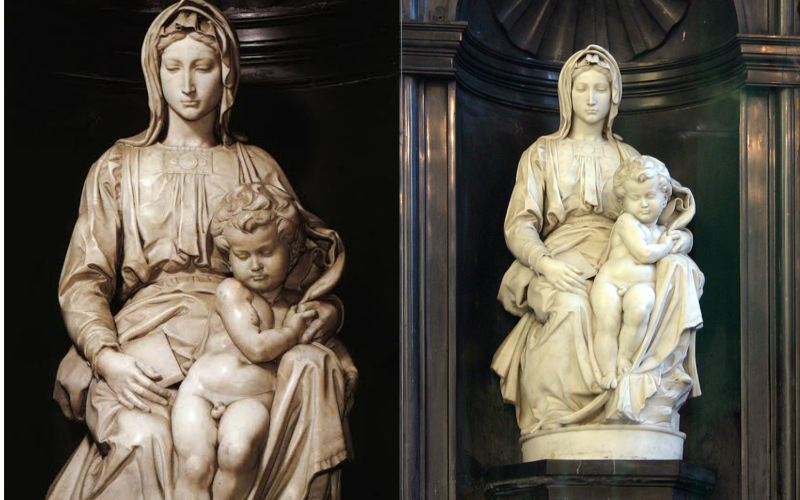The Virgin Mary and Child are shown in Michelangelo’s marble sculpture known as the Madonna of Bruges.
The Madonna and Child as portrayed by Michelangelo is very different from prior depictions of the same subject, which often featured a pious Virgin looking down on a child in her arms.
Instead, Jesus appears to be poised to leave his mother as he stands up straight, practically unsupported, and only lightly constrained by Mary’s left hand.
Mary, on the other hand, looks down and away rather than clinging to her son or even trying to look at him.
It is thought that the sculpture was first meant to be an altar piece. If this is the case, it would have been seen looking down and slightly to the right.
The early 16th-century sculpture also reflects the High Renaissance Pyramid style typically found in the works of Leonardo da Vinci during the late 1400s.
Madonna and Child and Michelangelo’s Pietà, which was finished just before, are similar in a few ways, particularly the chiaroscuro effect and movement of the drapery. Mary’s long, oval face is reminiscent to the Pietà in style.
The sculpture is significant for being the first of Michelangelo’s creations to do so while still in his lifetime.
Giovanni and Alessandro Moscheroni (Mouscron), affluent textile merchants in Bruges, once one of the most important commercial centers in Europe, purchased it in 1504 for a significant sum of money. The sculpture fetched 4,000 florins at auction.
Belgian authorities twice took the sculpture out of the country after it first arrived.
The first occurred in 1794 after French Revolutionaries had won the French Revolutionary Wars and taken control of the Austrian Netherlands; the people of Bruges were instructed to move it and numerous other priceless works of art to Paris.
After Napoleon’s ultimate defeat at Waterloo in 1815, it was returned. The second removal took place in 1944, during World War II, as German soldiers retreated.
They smuggled the sculpture to Germany in a Red Cross truck wrapped in mattresses. At a salt mine in Altaussee, Austria, it was rediscovered a year later and brought back.
It is now located in Belgium’s Church of Our Lady in Bruges. The Monuments Men, a 2014 movie, depicts this.


